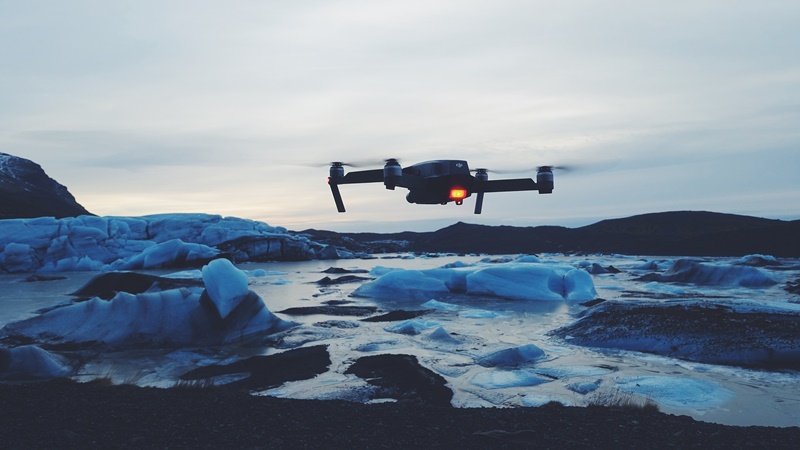1. Prepare for the Weather
Firstly, wrap up warm, if you’re feeling cold, you’re not going to have a good time. Another aspect that you need to think about during winter photography is your drone’s lowest operating temperature and battery temp. Most DJI drones have an operating temperature range of 0°C to 40°C. The main problem is that the batteries don’t last as long if they’re cold, so flight times may be lower than expected. You can reduce the impact of this by keeping your batteries warm before you insert them into the aircraft. Additionally, when you taking-off let your aircraft hover for a minute to warm up the cells.
2. Snow and Exposure
Snow can play games with your camera’s meter, leaving you with underexposed photos and grey snow rather than pearly white snow. The way around this issue is to bump up the exposure. If it’s a bright sunny day, you might need to increase it by two stops. However, on overcast days a one stop raise should be adequate to make your snow white again. You may also want to consider using ND filters to quickly and easily reduce the glare of the snow. Generally speaking, an ND 32 is recommended for shooting snow on bright days. What’s more, an ND16 can also be used if you increase the shutter speed.
3. White Balance
You’d think that getting the right white balance would not be an issue when snapping shots of snowy vistas. Strangely it is, and snowy pictures often end up feeling blue. There are two ways to sidestep this problem, the first one is just letting the auto white balance to try and figure it out and shooting in RAW, so in post processing, you can sort out the white balance. The second more difficult one is to set your camera’s white balance manually. Unfortunately, there isn’t one magical setting of Kelvin (the measurement of color temperature) that will make all your snowy photos correctly balanced as lighting is rarely consistent.
4. Bright Colors for Contrast
The thing about taking photos of snow is that it’s white, and everything it covers is also white so that an all-white picture may be a little dull. Look for bright contrasting colors such as yellow, red or orange as they will give your photo a striking contrast to the pure whiteness of the snow.
5. Winter Light
This is a boon to photographers, helping out by giving us a more extended golden hour, with more 3-dimensional textures and elongated deep shadows. The reason for this is that during the winter the angle of the sun is smaller on the horizon and the sun will never reach a high point. Any Photographer will tell you pictures look great in horizontal lighting as the image has better contrast than in verticle lighting.
6. Focus Adjustment
The problem with winter photography is that the scene you want to capture might have low contrast. If it’s foggy, overcast or snowing, this means that it can be difficult for the lens to autofocus as it may struggle to find enough contrast to autofocus. The good news is that it’s easy to fix as all you need to do is switch your drone to manual focus in the DJI GO apps and select the focus of your shot on the flight screen.
Source: DJI (dji.com)
